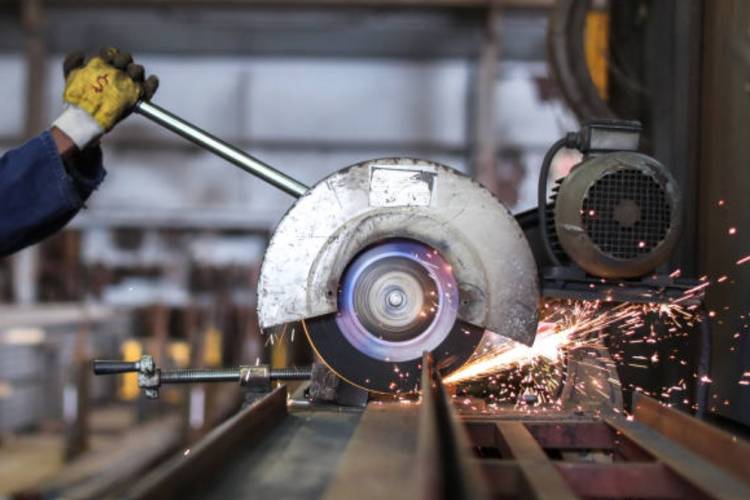
Core sector growth slowdown: India’s eight core infrastructure sectors—coal, crude oil, natural gas, refinery products, fertilisers, steel, cement, and electricity—are the bedrock of the country’s industrial output. Collectively accounting for 40% of the Index of Industrial Production, they serve as both inputs for a range of industries and indicators of overall economic health.
Yet, the combined Index of Core Industries posted a disappointing 1.7% growth in June 2025, according to data released by the Department for Promotion of Industry and Internal Trade (DPIIT). This marks a sharp fall from the 5% growth seen in June 2024. While marginally better than May 2025’s revised figure of 1.2%, the latest number still signals an underwhelming trajectory for the economy’s foundational sectors.
READ | US-India trade deal nears; digital, dairy disputes weigh
Cracks beneath the surface
At first glance, June’s data may appear to show tentative improvement, with growth hitting a three-month high. But a closer look reveals deeper structural weakness. Five of the eight core sectors contracted in June. Coal output fell sharply by 6.8%—partly a result of the high base effect from last year. Crude oil and natural gas production slipped by 1.2% and 2.8%, respectively, extending a trend of stagnation in India’s upstream energy sector. Fertiliser output also declined by 1.2%, while electricity generation contracted 2.8%, influenced by cooler weather and excess rainfall reducing power demand.
These negative readings are more than statistical blips. They reflect subdued industrial activity, persistent energy bottlenecks, and weak demand — especially concerning given that the monsoon season often brings a spike in electricity consumption and fertiliser usage.
Signs of life in construction inputs
Against this backdrop, the performance of refinery products, steel, and cement offers some relief. Refineries posted 3.4% growth, while steel and cement recorded robust expansions of 9.3% and 9.2%, respectively. The strength in these sectors suggests that construction activity—fuelled by government-backed infrastructure projects and private real estate demand—remains a relative bright spot.
While the cement numbers benefited from a favourable base, the strength in both cement and steel augurs well for construction-related Gross Value Added (GVA) in the first quarter. Yet, these sectors alone cannot carry the weight of the industrial economy. Without a recovery in energy production and broader manufacturing, the rebound in construction may remain an isolated trend.
A lethargic first quarter
For the April–June quarter of FY26, core sector growth came in at a tepid 1.3%, compared to 6.2% in the same period last year. The steep deceleration underlines broader industrial malaise. ICRA projects that overall IIP growth for June 2025 will likely range between 1.5% and 2.5%, with official figures due on July 28. These forecasts are well below the levels needed to support a robust GDP expansion.
The weak showing is not confined to core sectors alone. Manufacturing output in several consumer-facing industries—textiles, leather goods, pharmaceuticals, electronics, and furniture — also contracted in recent months. Some of this may be attributable to base effects and weather anomalies. But the consistency of these declines points to more fundamental demand-side weakness.
Cooling demand, rising uncertainty
The muted electricity generation in May and June may partly be weather-related, but it also hints at softer industrial consumption. When seen alongside weakening output in consumer-oriented manufacturing, the trend suggests domestic demand is failing to recover meaningfully. Exports remain sluggish, burdened by geopolitical uncertainty and tepid global trade. If household consumption and private investment also fail to pick up, the economy may face a longer-than-expected period of low growth.
This poses risks to the Reserve Bank of India’s forecast of 6.5% GDP growth for both the first quarter and the full year. Core sector stagnation, if sustained, will eventually drag down industrial production, dampen investment sentiment, and challenge fiscal consolidation efforts. With the government’s capex push already shouldering much of the growth burden, any prolonged softness in infrastructure-linked sectors will weigh heavily on the broader recovery.
The way ahead
The data underscores the need for policymakers to remain vigilant. Energy sector inefficiencies, particularly in coal and upstream hydrocarbons, need urgent attention. Investment in transmission and storage infrastructure must keep pace with renewable energy additions. On the demand side, timely interventions to boost consumption—possibly through targeted fiscal support or tax rationalisation—could help arrest the slide in consumer-facing industries.
The RBI’s next policy review, coupled with the upcoming IIP release, will be critical markers. Monetary policy alone may not have the tools to fix supply-side constraints, but it can help maintain liquidity and credit flow to productive sectors. Equally, the Union government’s infrastructure rollout must be maintained without delay, even if budgetary adjustments are needed.
India’s industrial engine is sputtering as the new fiscal year gets underway. The economy needs more than isolated bright spots—it needs a synchronised revival across core sectors, manufacturing, and consumption. Otherwise, the 6.5% GDP growth target may begin to look more like a ceiling than a floor.
